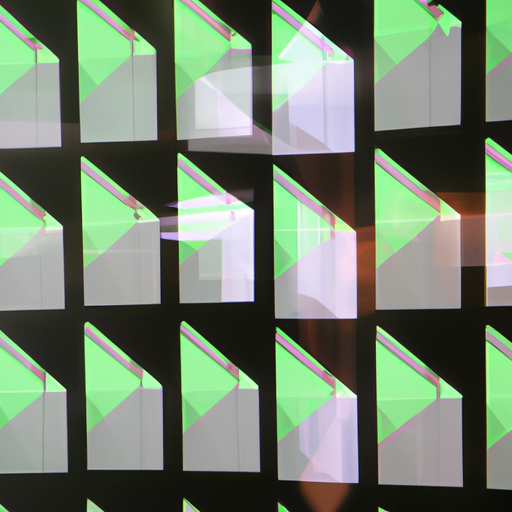The Ultimate Guide to Bendable LED Display Manufacture
In the fast-paced world of digital display technology, bendable LED displays have revolutionized the market with their flexibility and dynamic visual presentation. This article delves deep into the manufacturing process of bendable LED displays, providing valuable insights into every aspect of their creation, from conception to final product. Whether you're a prospective manufacturer, an investor, or simply a technology enthusiast, this comprehensive guide covers everything you need to know about bendable LED display manufacture.
What is a Bendable LED Display?
Bendable LED displays are innovative digital screens made from light-emitting diodes (LEDs) that can bend and flex without breaking. These displays are typically thinner, lighter, and more flexible than traditional LED screens, allowing for increased versatility in their application. Bendable LED screens can be used in various contexts, such as advertising, installations, architecture, and wearable technology.
The Benefits of Bendable LED Displays
1. Flexibility and Versatility:
- Adaptable Shaping: Ideal for curved surfaces and non-traditional installations.
- Wearable Technology: Integrates easily with clothing, accessories, or body-conforming designs.
2. Lightweight and Thin Design:
- Ease of Installation: Facilitates easier handling and mounting.
- Portability: Suitable for transportable and dynamic display needs.
3. High Durability:
- Shock Resistance: Withstands physical impacts better than traditional displays.
- Weather Resistance: Ideal for outdoor installations within varying environmental conditions.
Key Components of Bendable LED Displays
To understand the manufacturing process in-depth, it's important to be familiar with the primary components involved:
1. LEDs (Light Emitting Diodes):
The fundamental building block that determines the brightness, color, and energy efficiency.
2. Flexible Substrate:
A critical element allowing the display to bend, usually made of materials like polyimide or flexible glass.
3. Drive IC and Controllers:
These components regulate and manage the flow of electricity, ensuring proper functioning of the LEDs.
4. Protective Encapsulation:
Protects LEDs and other electronic components from environmental factors.
The Manufacturing Process of Bendable LED Displays
1. Research and Development (R&D):
- Market Analysis: Identifying demands for various applications of flexible displays.
- Material Science: Innovating materials that enhance flexibility and durability.
- Prototyping: Creating prototypes to test performance and resilience.
2. Design:
- CAD Modelling: Precision engineering through computer-aided design.
- Thermal Management: Design strategies to manage heat dissipation.
- Electrical Layout: Planning the circuit paths and ensuring power efficiency.
3. Material Preparation:
- Substrate Preparation: Depositing a flexible substrate using roll-to-roll processing.
- LED Placement: Precision placement of LEDs on the substrate using pick-and-place technology.
4. Assembly:
- Encapsulation: Applying a protective coating to shield the LEDs.
- Interconnects: Establishing connections between LEDs, drivers, and controllers.
5. Testing:
- Performance Testing: Checking brightness, color uniformity, and power consumption.
- Durability Testing: Ensuring flexibility, impact resistance, and longevity of the display.
6. Quality Assurance:
- Certifications: Complying with industry standards like ISO, CE, and RoHS.
- Final Inspection: Rigorous quality checks to detect and rectify defects.
Applications of Bendable LED Displays
1. Advertising and Marketing:
- Billboards: Eye-catching advertisement on curved structures.
- Retail Displays: Custom displays for showrooms and stores.
2. Architecture and Interior Design:
- Building Facades: Wrap-around LED displays for striking visual effects.
- Interior Design: Enhancing spaces with dynamic digital artwork.
3. Wearable Technology:
- Smart Clothing: Integrating displays into clothing for unique fashion statements.
- Healthcare Devices: Flexible displays used in medical monitors and devices.
4. Automotive and Transportation:
- Car Interiors: Curved dashboards and infotainment systems.
- Public Transport: Dynamic signage and information panels.
The Future of Bendable LED Displays
The advancement of bendable LED display manufacturing is poised to transform several industries. Future innovations may include:
1. Enhanced Energy Efficiency:
- Low-Power LEDs: Further reducing power consumption for prolonged use.
2. Increased Interactivity:
- Touch-sensitive Displays: Combining flexibility with interactive surfaces.
3. Expanded Material Options:
- New Substrates: Continuing to explore materials that offer improved performance.
Challenges in Bendable LED Display Manufacture
While bendable LED displays offer numerous advantages, the manufacturing process is not without its challenges. Some of the potential obstacles include:
1. Cost:
- High Initial Investment: The R&D and materials for flexible displays can be costly.
2. Technical Complexity:
- Precision Requirements: Extremely precise machinery and technology are needed for assembly and encapsulation.
3. Durability vs. Flexibility:
- Finding Balance: Ensuring both flexibility and durability without compromising the display quality.
Conclusion
Bendable LED displays represent a remarkable leap forward in the world of digital screens. From their versatile applications to the intricate manufacturing process, understanding the complexities involved in creating these innovative displays is essential. As technology continues to advance, the potential for bendable LED displays will likely expand, promising exciting developments in various industries.
For any manufacturers considering entering this field, it is crucial to invest in cutting-edge technology and skilled expertise to create high-quality bendable LED displays that meet industry standards and consumer expectations. The future of display technology is here, and it bends to our imagination.

